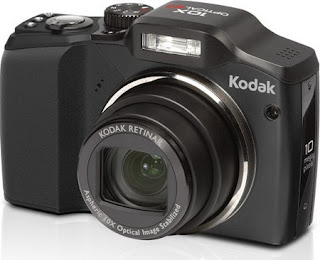Front Cover


I feel that I have learnt a lot since my preliminary task. My preliminary task contains very little cover lines and as I didn't cut the image out there are a lot of shapes on there as the writing couldn't be seen on the woodland background. I like the images I used for both of my tasks. The preliminary task image has very good lighting and the picture looks bright and 'crisp'. You can see that it was an Autumn edition and can see that the main task was a winter edition because of the colours used. I feel that the colours used on my main task are a lot more complimentary than the colours on the preliminary task. However, they were relevant as they were the school colours. Both of my images are medium long shots so that an outfit is shown. The prop used in the main task is relevant to my magazine as it is a music magazine. I did not use a prop for my preliminary task as I feel that it would have been very busy with the woodland background as well. The fonts on my preliminary task are all the same which is very boring and doesn't look very interesting whereas on my main task I learnt that a variety of fonts is essential to show the different styles to your magazine attracting a wider audience. When doing my preliminary task I put all of my cover lines around the main image, however, on my main task magazine, I tried putting the main cover line across the image and I feel that this worked well. In both tasks I used the idea of shapes with a cover line on top, I felt that this made it stand out on the page so made the cover line something that would attract attention. I used a comeptetion for both magazines as people will see that they can win something and will then be attracted to the magazine.
Contents Page


My two contents pages are very different to each other. I definitely feel that I learnt a lot when making my contents. My contents page for my preliminary task is very plain. It doesn't even look finished. The columns look different sized and there is far too much space on there. The font is very large and takes up a lot of room on the page. Compared to my main task contents page which is very busy and has an equal amount of space for each column. I also again only used one font for my preliminary task and again used a variety for my main task. I highlighted the main article on each contents page. On the preliminary task I made the font bigger and bolder highlighting its importance on the page and I also did this with my main task except that I also made it central so that it catches the eye of the reader when they first look at the page. The photographs on my media tasks are very different and I think that the ones for my main task look a lot more professional than the ones for my preliminary, they are edited better and are thought about more. However, the ones taken for my preliminary task are relevant to the school magazine with the props used.
To conclude, I feel that I have learnt a lot in the time since I did my preliminary task. I learnt about the importance of drafting and having a plan as it is then a lot easier to produce when you have a clear idea. By producing a draft I knew exactly how I wanted my magazine to look and by planning the products, this meant I could maintain a consistent house style throughout the magazine. I also feel that I learnt a lot about time management. By keeping to the deadlines set, the coursework did not seem like too much work, some weeks there was more work than others but by keeping on top of it, it did not pile up and become a big rush at the end. By researching existing products, I gained knowledge of the music magazine industry and picked up on some of the common features they use. I then converged these into my own magazine making it seem more proffessional and it them seemed to fit into the music magazine 'trend'.



















